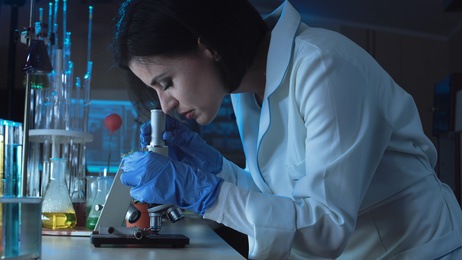UAMS awarded $1.6 million to continue research into origins of pathogen-borne diseases
by July 25, 2023 11:41 am 379 views

The National Institutes of Health recently awarded an additional $1.6 million to researchers at the University of Arkansas for Medical Sciences (UAMS) to continue a 14-year effort aimed at gaining a deeper understanding of the fundamental principles governing intracellular membrane traffic — a crucial process occurring in every human cell.
Intracellular traffic plays a pivotal role in the transportation of proteins and other macromolecules to diverse cellular locations, both within and outside the cell. It maintains cellular homeostasis and significantly influences the interactions between cells and their surrounding environment.
Vladimir Lupashin, Ph.D., a professor in the UAMS College of Medicine Department of Physiology and Cell Biology and the primary investigator, said comprehension of these mechanisms serves as a crucial foundation for developing effective treatments for a wide range of diseases, including cystic fibrosis, Parkinson’s disease and Alzheimer’s disease.
Moreover, it plays a significant role in understanding and addressing other conditions such as Amyotrophic Lateral Sclerosis (ALS), and various forms of cancer and diabetes.
By unraveling the intricate workings of intracellular membrane traffic, researchers aim to uncover novel therapeutic targets and strategies to combat these debilitating illnesses.
Lupashin’s laboratory has already made several scientific contributions that have resulted in the publishing of more than 80 original papers in high-profile scientific journals.
“We have pioneered the functional analysis of the Conserved Oligomeric Golgi (COG), an evolutionarily conserved protein complex critical for membrane trafficking and protein modifications in the Golgi apparatus,” he said, describing the Golgi as “the central hub for protein modification and sorting within cells. It plays a pivotal role in a process known as glycosylation, where highly complex sugars or glycans are added to proteins.”
Additionally, Lupashin highlighted that the COG complex, a critical component of intracellular membrane traffic, can be exploited by various pathogens such as viruses, pathogenic bacteria, and toxins. However, the precise mechanisms by which these diverse groups of pathogens evolved to depend on COG function remain unclear.
“Understanding the molecular basis of COG-pathogen interactions will allow us to develop the strategies to protect cells and organisms from pathogen-borne diseases,” Lupashin said.
The R01 renewal totals $1,638,172 and enables the research to continue through March 31, 2027. The original five-year grant has been continuously renewed in four-year increments. In total, Lupashin has received $6,270,227 from the NIH for this research.
